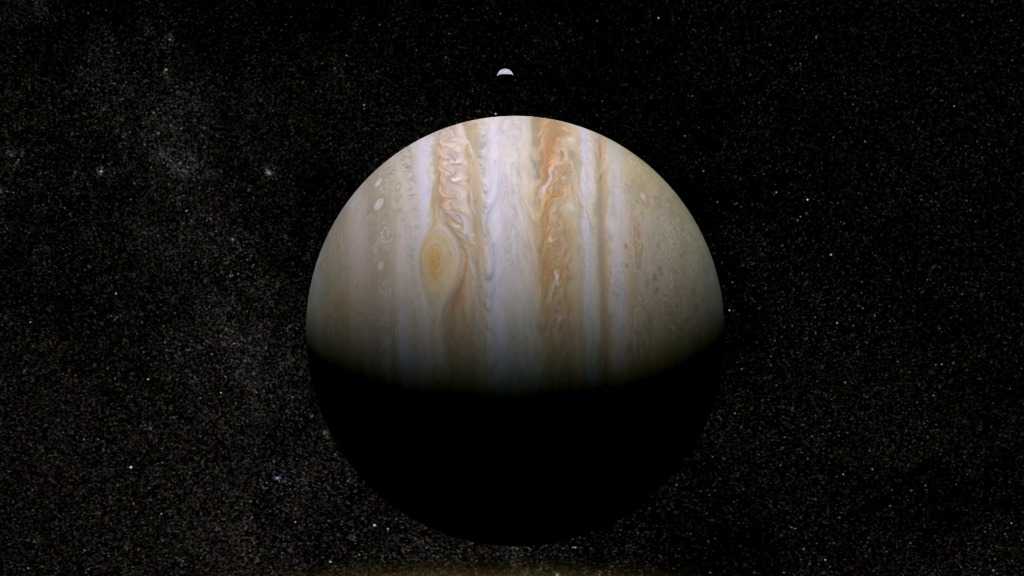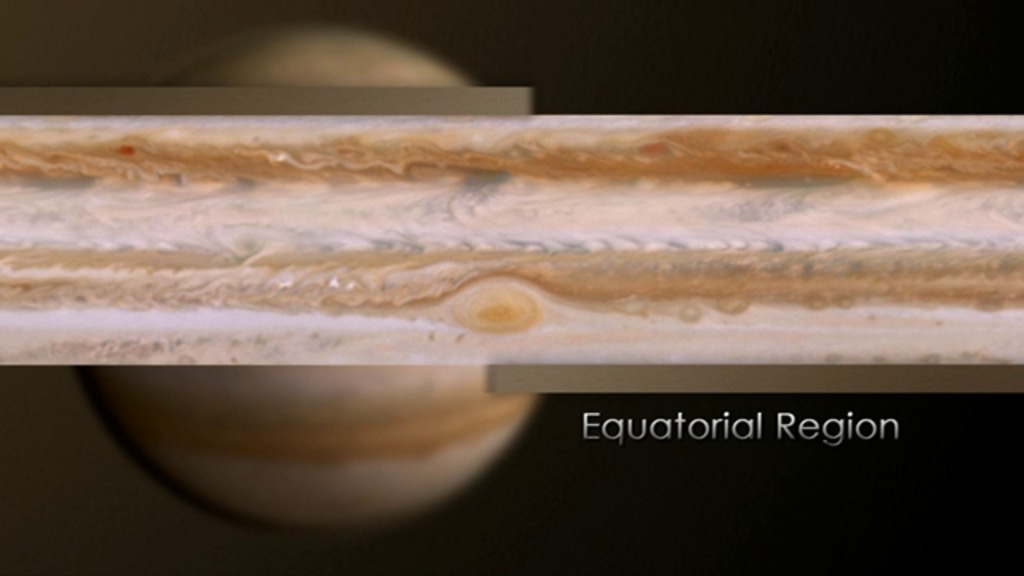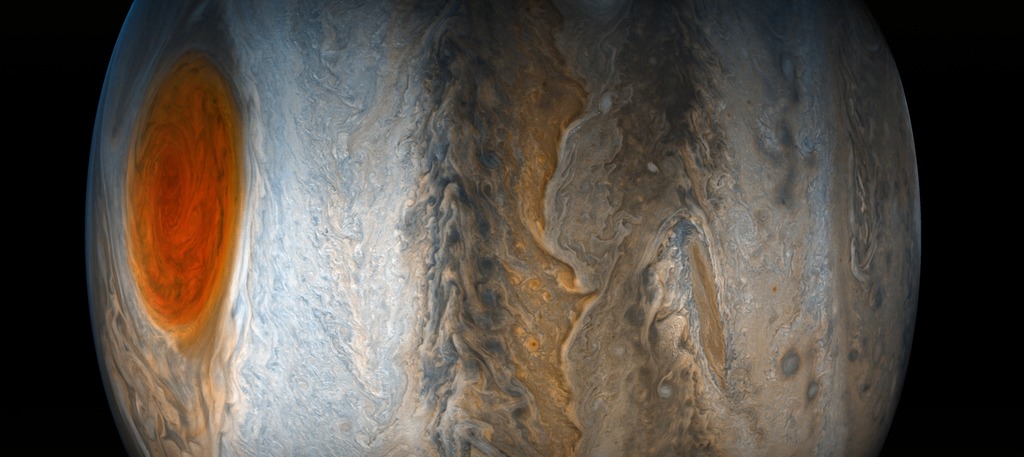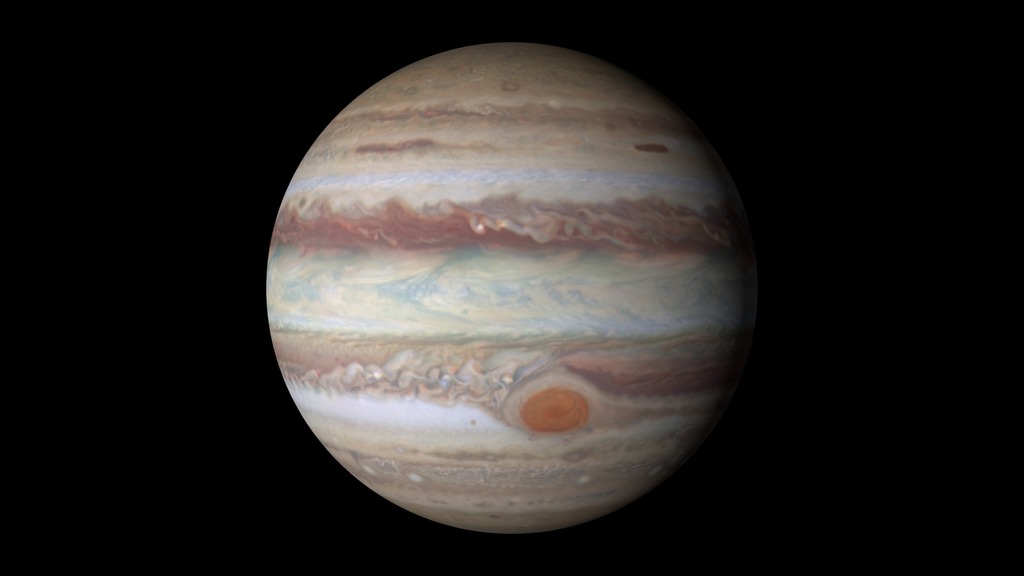Jupiter Quasi-Quadrennial Oscillation
Climate patterns on Jupiter can have striking similarities to those on Earth, making the gas giant a natural laboratory for understanding planetary atmospheres. Complete transcript available.
Watch this video on the NASA Goddard YouTube channel.
Music provided by Killer Tracks: "Lights," "Times Waits," "The Space Between"
When scientists look at Jupiter's upper atmosphere in infrared light, they see the region above the equator heating and cooling over a roughly four-year cycle. They dub this Jovian climate pattern the "quasi-quadrennial oscillation," or QQO, and it has a little sibling on Earth – a two-year temperature cycle accompanied by a reversal of the equatorial jet stream. Earth's cycle can influence the transport of aerosols and ozone and can affect the formation of hurricanes, making it an active area of climate research. Now, scientists at NASA's Goddard Space Flight Center have developed a new model for understanding Jupiter's QQO, which could lead to a refined understanding of Earth's own climate.
Jupiter quasi-quadrennial oscillation, version with timestamp and other text.
Jupiter quasi-quadrennial oscillation, version without text.
Jupiter quasi-quadrennial oscillation, global view.
Beauty shot of Jupiter, available in 4K resolution.
For More Information
See NASA.gov
Credits
Please give credit for this item to:
NASA's Scientific Visualization Studio
-
Scientist
- Richard Cosentino (USRA)
-
Science advisor
- Amy A. Simon (NASA/GSFC)
-
Producer
- Dan Gallagher (USRA)
-
Visualizers
- Trent L. Schindler (USRA)
- Horace Mitchell (NASA/GSFC)
-
Science writer
- Elizabeth Zubritsky (ADNET Systems, Inc.)
-
Videographer
- John Caldwell (Advocates in Manpower Management, Inc.)
-
Support
- Rob Andreoli (Advocates in Manpower Management, Inc.)
Release date
This page was originally published on Monday, December 18, 2017.
This page was last updated on Monday, July 15, 2024 at 12:05 AM EDT.

![Music credit: "Street Dancer" by Donn Wilkerson [BMI] and Lance Sumner [BMI]; Killer Tracks BMI; Killer Tracks Production MusicWatch this video on the NASA Goddard YouTube channel.](/vis/a010000/a012500/a012585/Hubble_Europa_04-2017_thumbnail.png)
![Music credit: "Triangulate" by Gianluigi Gallo [PRS]; El Murmullo Sarao SGAE, Universal Sarao SGAE; SaraoMusic; Killer Tracks Production MusicWatch this video on the NASA Goddard YouTube channel.](/vis/a010000/a012500/a012570/Hubble_Jupiter_Opposition_thumbnail.png)
![Web VideoMusic credit: "Next Generation" by Enrico Cacace [BMI]; Atmosphere Music Ltd PRS; Volta Music; Killer Tracks Production MusicWatch this video on the NASA Goddard YouTube channel.](/vis/a010000/a012300/a012375/Hubble_Europa_thumbnail.png)





